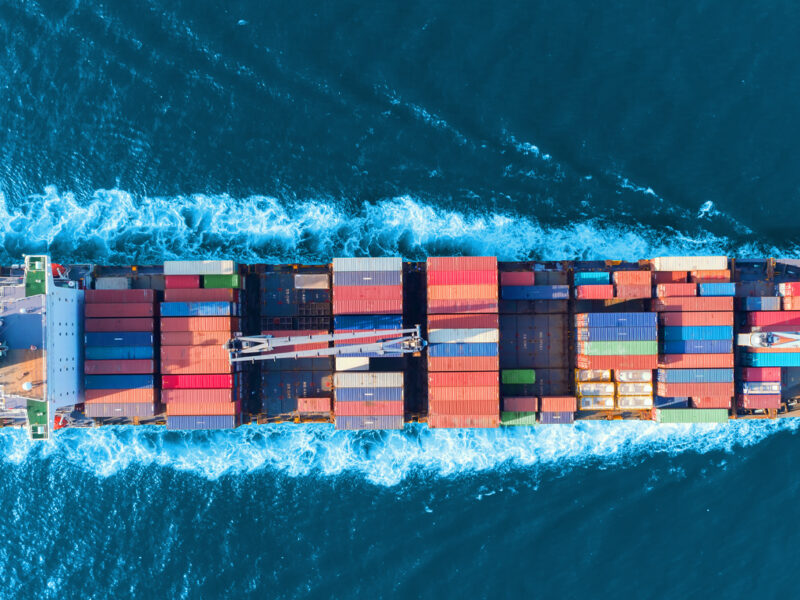Factors affecting ocean freight rates for shipping goods play a vital role in the profit generation of an exporter or importer. The final decision on whether to go ahead with a sale is determined by the break-even point i.e. the rate at which there will be zero loss and zero profit. So, if goods are to be exported, every effort is made to make the break-even rate as low as possible. If goods are to be imported, every effort is made to make the break-even rate as high as possible.
Rates rarely fall below the break-even point; therefore, it can be assumed that all sales are done at a rate below the break-even point. As for imports, an importer will try to negotiate rates that are as high as possible without causing negative prices until they hit the break-even point. In both cases, the market trends and conditions are taken into consideration before deciding on rates. Both internal and external factors affecting the shipping industry are counted.
All rates are set using market trends as a benchmark. Consequently, the same exporter or importer will ask for different freight rates depending on prevailing economic conditions. For example; during an economic recession, when there is less demand and excess capacity, carriers offer special discounts to shipping lines. What are the factors affecting transportation rates?

Rates are influenced by many factors which include but are not limited to the demand for imports or exports, production costs of goods, inventory levels in warehouses, freight capacity, etc. The change in any one-factor results in a change in the rate
The ocean shipping industry is a complex and competitive business that has been shaped by countless factors throughout its long history. The rise of containerization, massive technological innovation, and new ways to increase efficiency on ships have all contributed greatly to how we move things across oceans today. However, there are some important market trends and historical factors that have had a major impact on the overall cost of ocean freight.
Some of these factors to consider include:
Supply and Demand: Free market economics is the foundation for any type of price mechanism, but can be especially important when dealing with something as unique and unpredictable as shipping rates. The ebb and flow of global trade and the availability of freight capacity will always determine how much it costs to move goods across the ocean.

Capacity Utilization:
When carriers have a lot of available tonnages, rates are usually low. When there is a shortage of ships, however, prices can climb to very high levels. For example, in the early 2000s when the economy was booming and trade was growing at a rapid pace, demand for space outstripped supply and ocean freight rates were at their highest levels. The opposite was true during the economic crisis of 2008 when ship owners had trouble finding customers and ships stayed in port for lack of work.
Price Volatility:
Unlike the fluctuations we see in other markets, such as gas and oil, different market forces dictate short-term price movements rather than long-term trends that are based on supply and demand. When it comes to shipping, prices can escalate or drop very quickly if there is a sudden change in the market.
Infrastructure:
The ability to move goods efficiently is largely dependent on having proper ports, roads, and rail systems in place. This also makes global trade trends a major factor in how rates are set. For example, when it comes to exporting from the U.S., there is a much higher level of costs associated with transporting goods via truck to ports in California or Texas instead of Virginia for shipment overseas. In addition, capacity constraints at major ports have been known to balloon rates due to long lines and congestion.

Location:
Many countries have direct shipping routes to major ports, which makes it cheaper to move goods around the globe. For example, if a company in Brazil needs to send products to Canada, they will likely pay less than an American manufacturer shipping to China.
Currency:
The value of currencies fluctuates all the time and countries with weaker economies often benefit from those who need their exports the most. For example, when the U.S. dollar is strong compared to the Brazilian real, American importers are more apt to send goods to Brazil instead of China because it’s cheaper for them in dollars even though the destination and transit times might be further away.
Weather:
Unpredictable conditions at sea can affect speed and routing, which in turn increase costs for logistics providers moving goods via ocean. Two of the biggest contributors to this are Hurricane season and piracy, which affect different regions at different times during the year.

Geopolitics:
Modern supply chains are extremely complex with dozens of touchpoints that can be significantly impacted by anything from political instability to the outbreak of war. Of course, this is nothing new as the world has seen many conflicts throughout history that have often wreaked havoc on international trade.
Historical Price Data:
This is one example of the various factors that can impact price trends. If demand for freight, currency values, or capacity changes suddenly, even if it’s just over a short period, then rates will change accordingly. For this reason, it’s important to keep track of historical trends so you can make educated decisions when negotiating logistics agreements.
Politics:
Trade wars and other global issues – such as climate change – can also cause shifts in ocean shipping costs. For example, the long-simmering trade war between China and the U.S. has created a situation in which both countries are trying to discourage imports from each other through tariffs. This has led to a dramatic increase in rates from ports in China to the U.S. and prompted many companies to divert shipments to other parts of Asia or Europe instead.
Combining these factors with custom documentation logistics is how multiple modes of transportation can be used to move freight across the globe in an affordable way while meeting all compliance standards.






